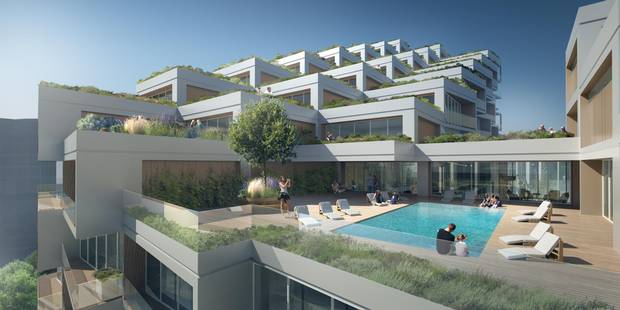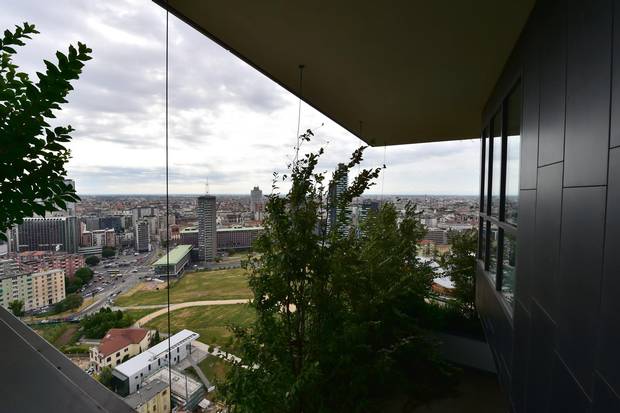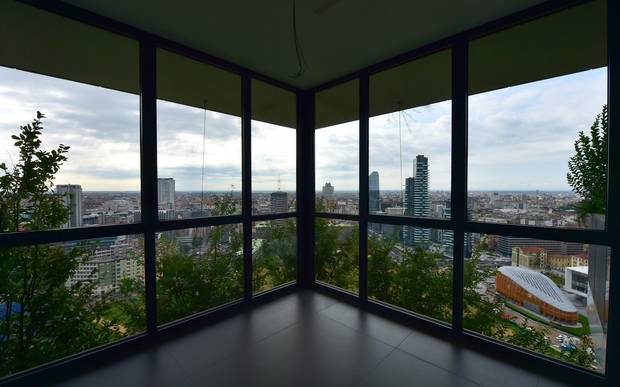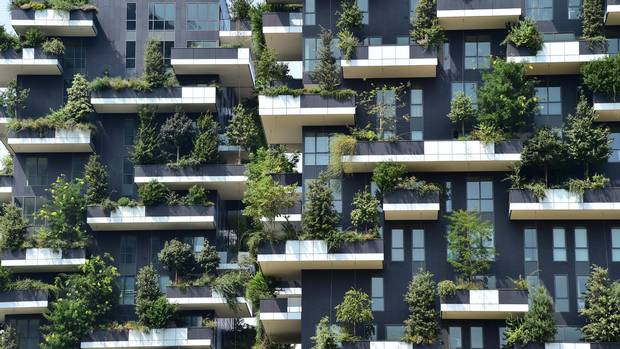When the Italian architect Stefano Boeri completed his Bosco Verticale tower in Milan in 2014, it captured the world's attention: fantastical images circulated of the 27-storey "Vertical Forest," its four facades studded with giant trays of lush, strapping trees.
There's something magical in this idea of nature invading the city – that as springtime comes, buds and blooms could climb up the city's facades. And indeed, almost every drawing for a new urban tower these days is topped by a green roof and garnished with trees, symbols of beauty and environmental virtue.
But do trees really grow on towers? Or are those drawings just camouflage for the grand ambitions of developers? The answer to that question is emerging right now, as a new crop of green towers grow up in our cities.
Recently the Danish architects 3XN unveiled their design for an L-shaped tower on Toronto's waterfront with a generous helping of greens. Part of the Bayside development by the developers Tridel and Hines would rise 14 floors, ascending in a set of one- and two-storey steps. Residents can step out, putter in their garden and wave to the neighbours.
"It will be collection of dwellings, rather than an apartment building," Kim Herforth Nielsen of 3XN told me. "I reckon many of the people who will move in will be coming from houses. We want to take the quality of a house, and put it into the building as much as possible."

3XN’s proposed design for a residential building on Toronto’s waterfront features staggered storeys that bustle with trees and gardens.
Gardens, Nielsen says, can do that. In 3XN drawings, these terraces appear as remarkably verdant, bursting with flowering hydrangeas. This, says Nielsen, will help create social cohesion among neighbours just as it does in house neighbourhoods – and also signal that this is a place where people live. "We want a warm quality to the building," Nielsen says, "showing this is residential and not an office tower."
The 3XN proposal is elegant and plausible. But realizing such a system brings up all sorts of technical and social questions: Which plants will survive in the microclimate 100 feet in the air? Will mature trees have enough soil in which to spread their roots? In a building with hundreds of residents, who will water and maintain them? Jim Ritchie, senior vice-president at developer Tridel, said the builders are looking into these matters with landscape architects; the plants would be fed by built-in irrigation systems and professional maintenance paid for collectively by the building's residents.
This can be done – more easily on low floors and especially in a friendly climate. In downtown Vancouver, the design of Robson Square and the Law Courts, completed in 1983, is proof. Landscape architect Cornelia Hahn Oberlander and architect Arthur Erickson collaborated on the complex, and its stepped roof gardens are now filled with mature trees and green mounds. It's a magical fusion of building and nature, a state that many modernist architects of the 1960s and 70s aspired to. Think of Habitat, too, the radical complex that Moshe Safdie designed for Expo 67 in Montreal: its apartments, each one a two-storey box stacked upon its neighbours, are studded with planters.

Trees are seen from one of the apartments inside the Bosco Verticale towers in the Residenze Porta Nuova area of Milan.
GIUSEPPE CACACE/AFP/Getty Images
There's a similar promise for the project that developers Westbank and architects Bjarke Ingels Group are bringing to Toronto's King Street West: apartments would be gathered into a series of peaks, lined with "an abundance of outdoor gardens," Bjarke Ingels told me, "The building creates its own views, and perhaps a view to the courtyard is just as exciting as the other direction." The drawings are gorgeous, the building's stepped concrete wrapped with leafy garlands.
Ingels has successfully realized this before in Denmark with a building dubbed the Mountain Dwellings.
But making that dream come to life in Toronto will be the task of landscape architects Public Work and the firm's Marc Ryan promises it can be done. The building "generates a collective roofscape composed of diverse green textures that intermingle with the architecture," Ryan says, "lending stunning views of a three-dimensional green architecture to the wider cityscape."

Trees are seen from one of the apartments inside the Bosco Verticale towers in the Residenze Porta Nuova area of Milan.
GIUSEPPE CACACE/AFP/Getty Images
However implausible it sounds, Ryan argues, such feats of horticulture are becoming familiar in landscape architecture. "Whether at street level or roof level, we're [often] far outside what you would call 'natural' growing conditions," he says. "With increasing knowledge of how to work in these specific conditions, we're less limited by technical capacity than we are by the critical commitments that are required to sustain such landscapes."
Other successful examples have been completed in recent years, including Safdie's Marina Bay Sands complex in Singapore and a high-end residential tower, Central Park Sydney, by French architect Jean Nouvel in Sydney that employs "living walls" of vertical plantings. They are symbols of integrating nature and urbanism; whether they're truly environmentally sustainable, with regards to how they are sited, constructed or operated, is another question entirely.
And they have inspired a thousand imitations from other architects. At its best, the meme of the garden tower is aspirational; at its worst, merely a ruse. The human eye looks at a drawing, sees trees and shrubs, and lingers on them; this can obscure just how huge a mass of concrete and steel they're sitting on.
When a new tower is drawn up like a lush vertical forest – like the one Zeidler Architects have imagined for Avenue Road in Toronto, rising dozens of floors into the sky – I become very skeptical about the building under the shrubs.
But with the right climate, planting plan and infrastructure, the garden-tower can be realized. The Bosco Verticale was finished last year and while it's considerably less lush than the drawings, the trees appear to be doing well. Twenty-seven floors up, the dream of a new forested city is alive and growing.
